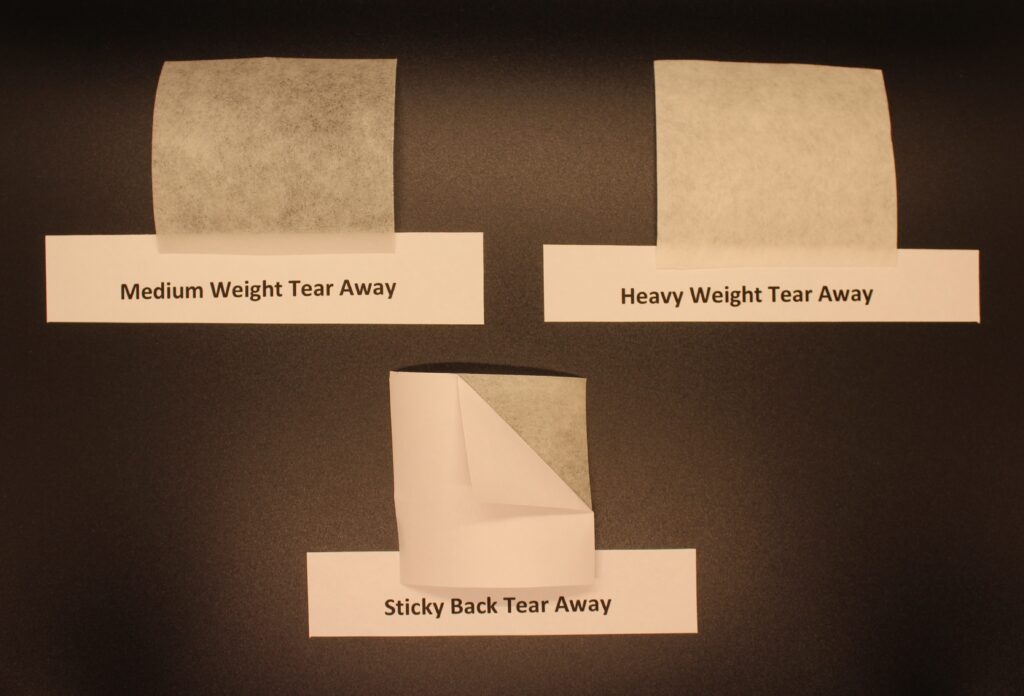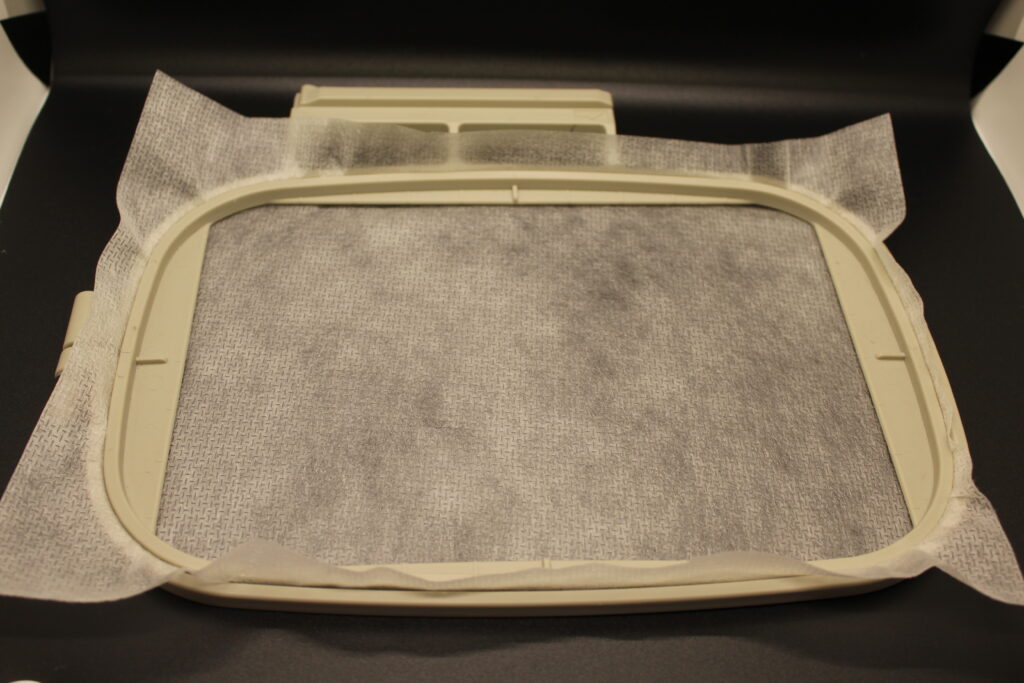Embroidery Stabilizer Guide

In my previous blog post, Learn Machine Embroidery - Embroidery 101, we discussed all things embroidery, including stabilizers, hooping, embroidery designs, and tools. Today, we will dive further into embroidery stabilizers and learn about many unique types available on the market.
What is an Embroidery Stabilizer?
People often wonder, “Do I need an embroidery stabilizer for machine embroidery?” The short answer is yes. Stabilizer helps support your embroidery design, thread, and fabric. The fabric alone does not provide the structure and support most designs require. The key to any successful embroidery project starts with an embroidery stabilizer. Stabilizer is the foundation for your project. Your project can pucker, bunch, or cause other stitching issues without the correct stabilizer. I recommend having a wide array of embroidery stabilizers on hand so you may complete projects without sacrificing quality.
Types of Embroidery Stabilizer:
Before you even begin your project, you must decide what type of embroidery stabilizer is appropriate.
I have included the table I compiled from my previous blog post. Feel free to print a copy and keep it handy for reference. I will further break down each stabilizer in detail below.
| Stabilizer Type: | Recommended Project/Material Use: |
| Cut Away (light, medium, heavyweight, fusible, and mesh) | Stretch clothing/fabric, bags/totes, mug rugs, cards, large stitch count designs |
| Tear Away (light, medium, heavyweight, and sticky back) | Keychains, faux leather (vinyl) projects, woven fabrics |
| Wash Away Mesh or Water Soluble Stabilizer | Freestanding lace designs (FSL), hand towels, sheer fabrics |
| Wash Away Water Soluble Topper or Heat Away Topper | Used as a topper for nap or raised fabrics such as towels, sherpa, fleece, etc. |
**I have included pictures of various stabilizers below. Depending on the brand you purchase, your stabilizer may look different than mine.**
Cut Away Embroidery Stabilizer:
Cut Away Embroidery Stabilizer comes in various weights and styles, including fusible and mesh. Recommended for stretch fabric and clothing, the cut-away stabilizer is permanent and provides the most support of all stabilizers available. I often use medium-weight cut-away stabilizer in my projects because of the support it provides my fabric and stitches. I rarely have issues with puckers or bunches with cut-away stabilizers.
I also enjoy using a fusible cut-away mesh stabilizer. Fusing your fabric to your stabilizer will ensure it doesn't bunch or move during stitching. Additionally, I have found that Designs by JuJu Greeting Cards stitch fabulous with fusible mesh.

Tear Away Embroidery Stabilizer:
Tear Away Embroidery Stabilizer is commonly used for stable woven fabrics that won’t stretch or give when stitched. I typically utilize a tear-away stabilizer on projects where I want to remove the stabilizer after stitching, such as ITH projects like keychains and stuffies. I also enjoy using it to monogram and personalize blankets. Tear-away stabilizer comes in many weights. I have both medium-weight and heavy-weight on hand. You will want to use a lightweight stabilizer for projects with a smaller stitch count and heavier weight on projects with a denser stitch count or thick satin stitches. Through trial and error, I have found that satin stitches tend to tear completely through light/medium-weight tear-away stabilizers. Hooping two pieces of light/medium weight stabilizer can replace one piece of heavy weight stabilizer when necessary.
Sticky Back Tear Away stabilizer is also helpful to have on hand. I have often used it to help position designs in my hoop, such as onesies and sweatshirts. When using sticky back tear-away stabilizer with clothing, I always hoop one sheet of cutaway stabilizer first, tear away stabilizer next, and the clothing item last. You would not want to use tear-away stabilizer alone on clothing projects.

Wash Away Embroidery Stabilizer:
Wash Away Embroidery Stabilizer is frequently recommended for sheer materials and free-standing lace projects. It is typically not as supportive as a cut-away or tear-away stabilizer for stitching and won’t support your designs after it is washed away. I love using wash-away mesh for hand towels because it removes cleanly in the washing machine and helps the project look more complete and finished from both sides of the towel. If you want to stitch a denser design, it may not be the right stabilizer for your project.
Another type of washaway stabilizer is a water-soluble stabilizer. Sulky Solvy and Vilene are frequently approved in the embroidery community for their heavy weight and ability to handle high stitch counts typically found in free-standing lace (FSL) designs. I have used Sulky Solvy for many Designs by JuJu FSL designs and have never had an issue. Water soluble stabilizer is removed by soaking in a bowl of warm water. A Q-Tip or toothpick can help get into little areas and hard-to-remove spaces. Like tear tear-away stabilizer, if you are struggling with your project separating from your stabilizer, you can hoop two layers for added support.

Embroidery Toppers:
Wash away water-soluble embroidery and heat away embroidery toppers are essential for projects with raised fabrics such as sherpa, terry cloth, and fleece. Embroidery toppers help smooth the fabrics to create clean stitches that don’t get lost in the material's fibers. If you stitch directly onto a towel or sherpa material without a topper, the fibers will tend to entangle themselves into the stitches, creating unsightly thread gaps in your design. If you want to try your hand at hooded towels or hand towels, ensure you have an embroidery topper on hand. It is essential to note you would not want to use a topper as a stand-alone stabilizer. It would not provide the necessary foundation that cut away, wash away, and tear away stabilizers provide.

When using toppers for your project, you can secure them in the hoop or attach them with tape/pins instead. Make sure it is cut large enough to cover your stitch area and won’t get caught in your needle during stitching. Much like tear-away stabilizers, toppers are easily removed after stitching. Washaway toppers dissolve when washed and heated away toppers can be removed with an iron or safe heat source. Both are great to have on hand and are essential in my embroidery stash!

How to Use Embroidery Stabilizer:
Now that you have selected the appropriate embroidery stabilizer for your project, it is time to hoop it up. When hooping your projects, the stabilizer is the first layer that goes into your hoop. I always secure my stabilizer into my hoop, even if I am going to be floating my material. This ensures the stabilizer is secure and will not wiggle or fold under, leading to further issues. Another helpful tip is to make sure your stabilizer is cut big enough to fit your hoop. You should have some overlap. You risk your stabilizer pushing out of your hoop if it is not secured correctly. Finally, ensure your stabilizer is pulled taut, with no creases or loose edges.

Now, you are ready to get stitching! Have fun and enjoy!
